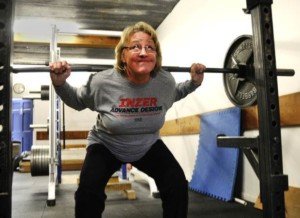
If you do not do consistent structured exercise, your risk of developing an aortic aneurysm, when all other things are equal, is higher than if you were to stick to a regular exercise regimen.
Here is what a vascular surgeon says about exercise and lowering the risk of an aortic aneurysm…but first, I want to point out what I’ve read on medhelp.org.
I have read about athletes being diagnosed with thoracic aortic aneurysm – these are people in their 20s to 50s who have led active lives, including jogging or cycling, and lifting weights.
They are then diagnosed with a thoracic aortic aneurysm – a bulge or dilation in the aorta – as a result of an imaging test that was performed for an unrelated reason.
Nevertheless, can exercise actually help lower the risk of ever getting an aortic aneurysm in the first place?
“It is well-established that because exercise increases shear stress and promotes removal of lipid (fat) molecules from the luminal surface of the aorta – by increasing nitric oxide and prostacyclin (fat molecule) release – that it both directly and indirectly inhibits atherosclerotic processes and helps in both reducing one’s systemic blood pressure and risk of developing aneurysms,” explains Seyed-Mojtaba Gashti, MD, a board certified vascular surgeon with Broward Health Medical Center in Florida.
Atherosclerotic processes refer to progressive plaque buildup in the arteries — in this case, coronary.
What kind of exercise is most useful in lowering the risk of developing an aortic aneurysm?
This question mostly applies to people who do not have genetically predisposing conditions to aortic aneurysm, such as Marfan’s syndrome.
First of all, you should know that two risk factors for aortic aneurysm are high blood pressure and atherosclerosis. Plaque buildup damages the inner lining of blood vessels.
By preventing these two variables (high blood pressure and plaque buildup) from occurring, this will reduce a person’s risk of developing an aortic aneurysm.
What better way to control these variables than to exercise?
The issue then become what is the best type of exercise.
In people with normal aortic size and dimension, there are no restrictions with weightlifting workouts or aerobic activity.
A well-rounded fitness/exercise regimen should involve strength training or lifting weights (e.g., barbell, kettlebell, machine, body-weight), aerobic workouts and something extra — such as yoga or tai chi.

However, no studies have been done to determine specifically what type of activity (e.g., swimming, running, hiking, Pilates, general strength training, body-weight training, group fitness classes, martial arts, pedaling) is the best at lowering the risk of developing an aortic aneurysm.










































